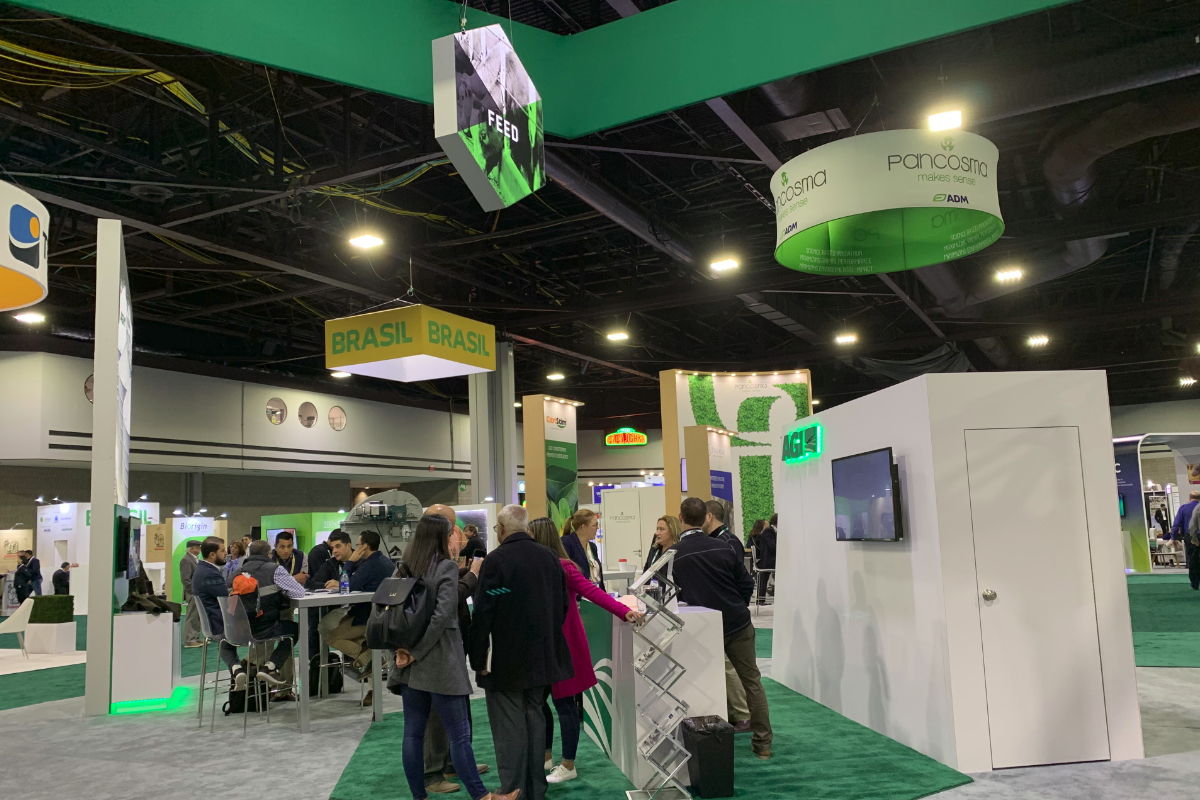ATLANTA, GEORGIA, U.S. — With safety and quality continuing as major concerns for the feed industry, exhibitors at the International Production & Processing Expo (IPPE) were showcasing solutions with their automation and other latest technologies.
IPPE continues in Atlanta, Georgia, U.S., through Thursday, Jan. 30.
Bühler highlighted multiple of its automation solutions, including the Mercury MES, which it introduced during IPPE. The latest technology, based on its WinCos system, has a high level of reporting and analytics built into the control system for those who want a high level of automatic control in their facilities, said Dan Lundt, Bühler sales director, feed and oilseeds North America.
“With this type of feed mill, you can run it with much fewer people,” he said. “The investment is higher in what the system can do but it offers the ability for much fewer operators. It’s all web-based so nothing ever goes out of date. It’s easy to stay current with the hardware and software at a much lower cost.”
The Mercury system will be installed at the University of Illinois’ Feed Technology Center in Champaign-Urbana, Illinois, U.S., along with Bühler core equipment and its online NIR system. With that system, the placement of simple sensors can measure fat, moisture, protein allowing for predictive or regulating control, Lundt said.
“Now the mill can see the level of moisture and run the pellet mill based on that,” he said. “You can optimize the facility without any operator input. It becomes a really smart mill.”
Aside from the number of operators, the automation options ensure consistent quality and output, Lundt said.
“It’s really more about the quality and output at the lowest amount of cost,” he said. “It just makes feed milling more secure in the future.”
Bühler also displayed its Pluto system, an entry level web-based automation system.
“Whereas you might normally invest in thousands of hours in engineering the automation system, here in a couple of hours you can do automation for an entire feed mill with drag and drop,” Lundt said. “It’s a very quick, entry level type of system with a lot of power and features.”
In addition to the automation systems, Bühler highlighted sensors that can be added to various equipment to monitor performance. For example, a sensor can be added to a hammermill and provide analytic data so repairs can be done when needed rather than on a maintenance schedule, Lundt said.
Bühler even showed how sensors can be added to a racecar that an employee races as a hobby. The car has been outfitted with Bühler sensors that are used in food production facilities.
“You can put this technology anywhere so it can improve a feed mill, a flour mill, or a race car, just as long as you apply it correctly and use the right analytics,” Lundt said.

AGI also was showcasing its sensors and monitoring products, including its CMC hazard monitoring system.
“It makes sure everything in the plant is monitored,” said Jeff Trudell with AGI. “You don’t want any hot bearings or speed issues. If a conveyor is getting clogged, we want the operator to know that in real time. It can handle 144 sensors on just one module so you don’t have a large investment in equipment.”
The Winnipeg, Manitoba, Canada-based company had a part of its VIS FLEXMill on display. With a capacity from 10 to 25 tonnes per hour, the system is ideal for larger farmers or small elevators in the feed business.
“It’s like a small feed mill in a container for international shipment,” Trudell said. “There are lots of bolt-on components so it can be very simple or more complex, it all depends on what the needs are.”
With contamination being a constant concern for the feed industry, AGI displayed its TRAMCO round bottom conveyor, which was been a feed industry favorite for more than 50 years.
“You get the energy conservation of moving material en masse style but with the round bottom, you get complete clean out,” Trudell said. “There’s no carryover when you add the next ingredient. It helps in the food safety side and contamination, and also for load out. You can run different blends through there with no contamination.”
Trade was on the minds of IPPE exhibitors, especially the recent phase one agreement between the United States and China that ended the ongoing trade dispute that impacted agricultural products. Anthony Leali, 4B Components Ltd. business development manager, said the agreement will impact business.
“But it’s unknown,” he said. “When I talk to customers and other OEMs, everyone is like, we don’t know. No one has a good feel for what is going to happen.”
With phase one signed, Trudell said he’s hoping grain will start moving. If that happens, grain storage and handling companies will start upgrading equipment.
“That’s going to be great for us — new conveyors, new structures, new bucket elevators,” Trudell said.
But if grain doesn’t start moving and the incoming harvest is average, there still could be demand for equipment, including temporary storage options.
Not many people have faith in the phase one deal since China set up trading relationships outside of the United States during the trade dispute.
“I don’t see them breaking that off, unless the country they partnered with has some kind of crop failure,” Trudell said.






